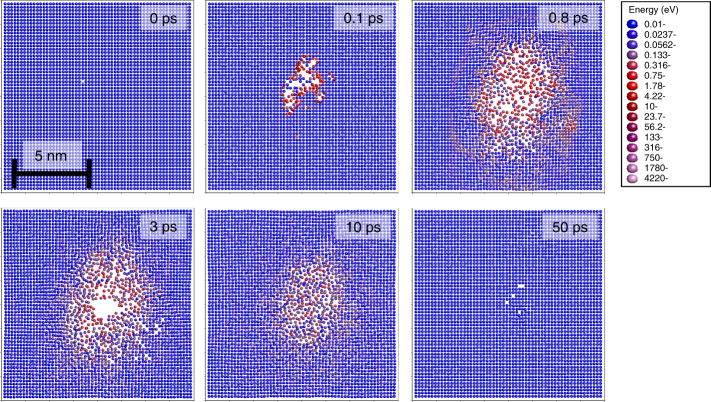Fig. 1.
Collision cascade. A cross-sectional view of a collision cascade induced by a 10 keV primary knock-on atom in Au obtained from typical molecular dynamics simulations. The individual dots show atom positions. Blue circles illustrate atoms with low temperature and red and whitish atoms have high kinetic energies, with the energy scale given to the right. Note how initially, when the atoms are hot (high kinetic energy), a large number of atoms are displaced from their lattice sites. However, as the cascade cools down, almost all atoms regain positions in the perfect lattice sites. It is because of these two so-called ‘heat spike’ effects that the number of atoms replacing other atoms is much larger and the amount of final defects generated much smaller than the prediction from simple linear collision cascade models like the NRT-dpa model

